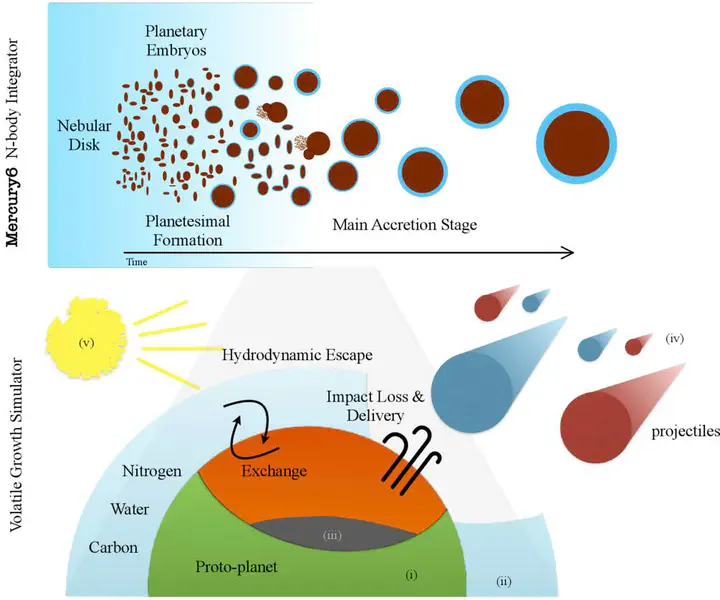Born Dry or Born Wet? A Palette of Water Growth Histories in TRAPPIST-1 Analogs and Compact Planetary Systems

Abstract
It is still unclear whether exoplanets in compact multiplanet systems such as TRAPPIST-1 are able to accrete large quantities of volatiles, grow to sufficient mass, and maintain robust atmospheres and hydrospheres. Previous estimates of water content in M-dwarf systems have largely relied on population synthesis or atmosphere–interior evolution models, often treating impacts and atmospheric loss in isolation. In this work, we combined impact delivery, impact erosion, and mantle-atmosphere exchange within a unified framework that tracks volatile evolution through stochastic collision histories. By explicitly including both planetesimal accretion and the prolonged luminous pre-main-sequence phase of M dwarfs, we find systematically lower water inventories for the inner TRAPPIST-1 analogs (b–e), spanning only 10−4 and 1% of Earth’s ocean mass across a wide range of disk structures and impact scenarios. By contrast, the outer planets (f–h analogs) frequently retain water inventories exceeding an Earth ocean mass. This volatile gradient provides a physically motivated explanation for JWST’s nondetections of atmospheres on TRAPPIST-1 b and c, suggesting an origin rooted in rocky planet formation. Our results suggest that many rocky planets in compact M-dwarf systems may form already depleted in volatile compounds, fundamentally limiting their capacity to sustain atmospheres or surface oceans. More broadly, our multistage framework for volatile tracking can help interpret future observations of compact system and set more realistic initial conditions for exoplanet interior compositions and atmospheric models.